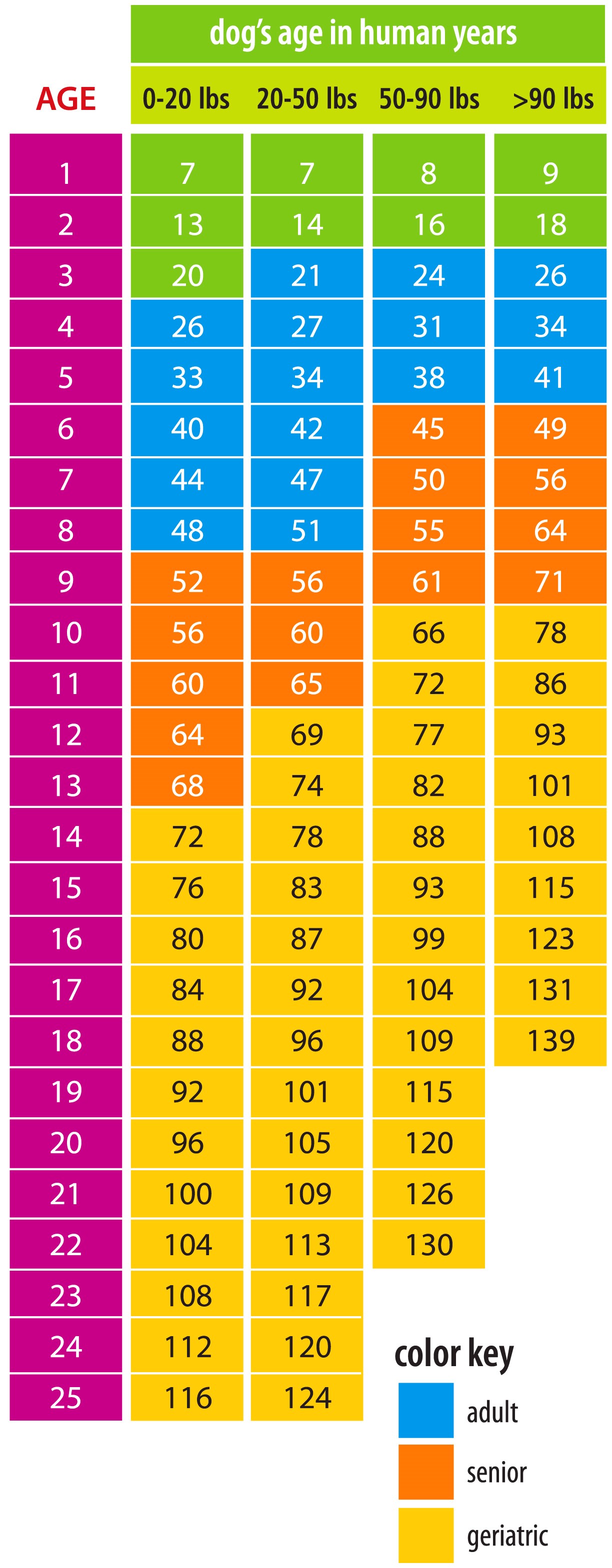A touch of gray on the chin or around the muzzle; once-clear eyes becoming a little cloudy. A slight stiffness in what used to be a frisky gait. Any of these can be telltale signs that your furry friend is entering the “golden” years.
Generally speaking, a dog 7 years of age or older qualifies as a senior. This varies, however, with the size and breed of the dog. For instance, smaller dogs tend to have longer life spans than giant-breed pets. A giant-breed dog as young as five years of age may be considered a “senior,” while a small-breed dog may not reach senior status until 10 to 13 years of age. Other factors affecting how individual dogs age include body weight, nutrition, environment, and overall health.
The old adage that every year in a dog’s life is equivalent to seven “human” years isn’t quite accurate. Pets mature more rapidly during the first two years of life, and then again during the final third of their life span. Use the chart at right to determine your dog’s age in human years.
Why is important to know your dog’s true age? Pets are living longer than ever, thanks to advances in veterinary care and improved nutrition, providing their owners with many more years of love and faithful companionship. The trade-off, however, is that senior pets, just like their aging human companions, become more vulnerable to multiple health problems and diseases such as weight gain and decreased mobility; heart, kidney, and liver diseases; diabetes; dental problems and periodontal disease; behavioral problems and cancer. The good news is that many of these health problems can be prevented, controlled, or treated if detected in the early stages.
Once your dog has reached senior status, twice-a-year senior wellness exams are recommended as the standard of care by the American Animal Hospital Association. Ask us how our Senior Care program can make your pet’s golden years happy and healthy!









